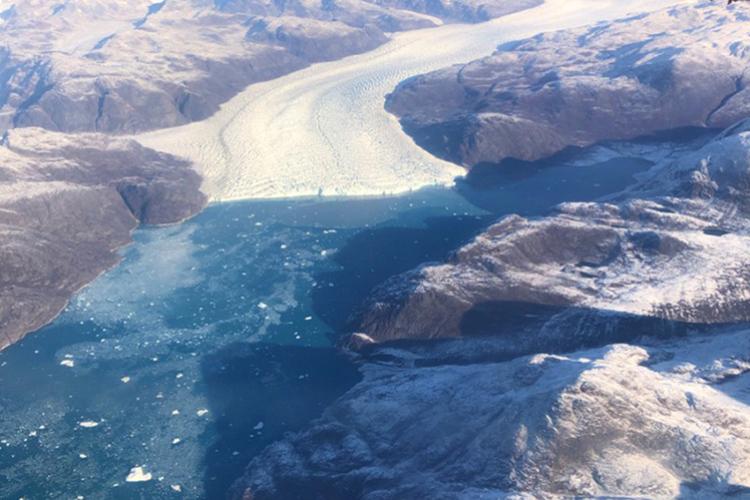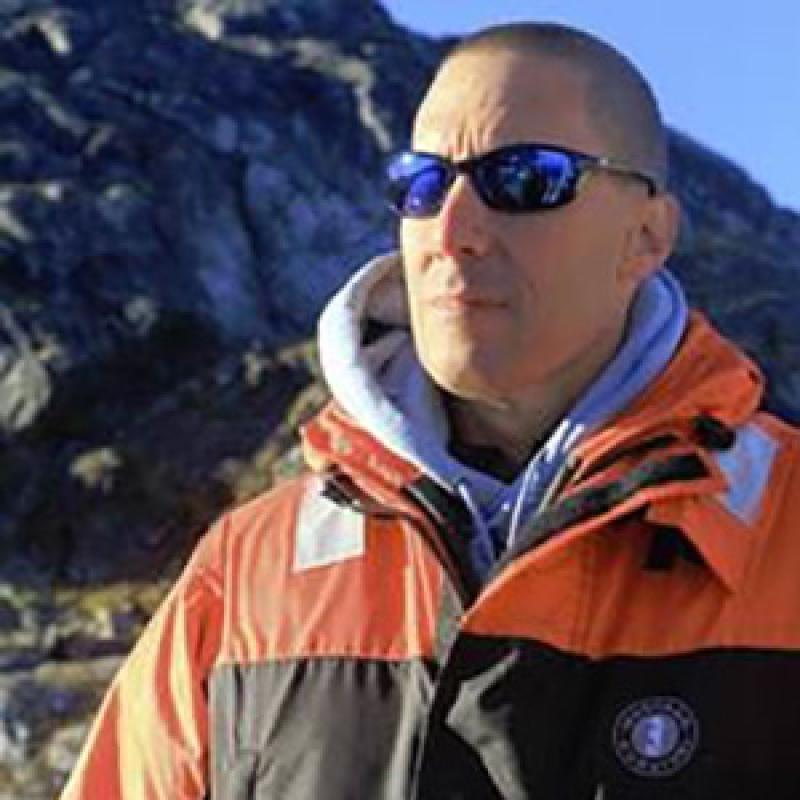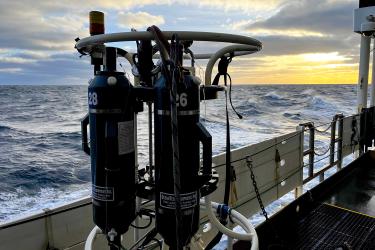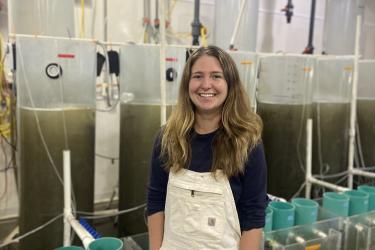Tim Sheehan takes a moment to snap a selfie while fishing for Atlantic salmon in the mountain-fringed Qaqortoq fjord in Greenland. Photo: NOAA Fisheries.
Scientist’s Log: Day 14
Sunday, October 13, 2019
No fishing because of wind. However, Martha Robertson from Fisheries and Oceans Canada arrived today. It’s nice to have her here and to overlap for a few days before I head back home. She’ll stay for another week or more to continue salmon tagging.
Martha was supposed to arrive on Friday, but cloudy weather in Narsarsuaq prevented the plane from landing and she was returned to Nuuk. Then on Saturday, the plane was unable to take off from Nuuk due to continued bad weather, but fortunately she was able to depart Nuuk today and land in Narsarsuaq. I was a little concerned that the ferry wouldn’t be running because of the winds, but they were. She arrived safe, sound, and in time for dinner.
Scientist’s Log: Day 15
Monday, October 14, 2019
Got out fishing with Johannes and Martha today. We decided to go to the new fishing spot and were rewarded with two beautiful large salmon. The first one was 75 centimeters, or just shy of 30 inches, and weighed almost 6 kilograms, or about 13 pounds. The second fish was 70 centimeters, or almost 28 inches, and weighed almost 5 kilograms, or just shy of 11 pounds.
It was good to get out with Martha so that she could see the whole routine. We were able to talk about what I do, don’t do, and why. It’s just like making a peanut butter and jelly sandwich — everyone has their method. While none of them are wrong, it’s good to compare notes, see the process and its order, and understand why the process is ordered in a certain way. Once I can show and explain the process and the order of how I sample and tag a fish, Martha can then decide what process and order works best for her.
Scientist’s Log: Day 16
Tuesday, October 15, 2019
Went out again with Martha and Johannes, back to our new favorite spot, and we were rewarded with only a single fish — another 70 centimeter salmon. The fish was sampled, tagged, and released lickety-split by Martha. My work here is done.
Scientist’s Log: Day 17-19
Wednesday, October 16, 2019 through Friday, October 18, 2019
Left Qaqortoq on the 7 a.m. ferry and this ride was much smoother than the ride over. It was beautiful and calm with a nice sunrise over the mountains. As we made our way up toward Narsarsuag, the fjord started to ice up which made for an “interesting” ride in our fiberglass boat. It was unnerving to hear the hull constantly cutting through and breaking up the sheet.
![Water smooth as glass as the sun rises over mountains lining the Qaqortoq fjord in southwest Greenland.]()
Blue skies, a beautiful sunrise, and water smooth as glass. Tim Sheehan begins his journey home with a ferry ride from Qaqortoq to Narsarsuag, Greenland. Photo: NOAA Fisheries.
Made it safe and sound and boarded my flight from Narsarsuaq to Nuuk. I had the late afternoon to myself so I walked around town to revisit some of the places from my first trip here in 1999. The town has grown so much and they’re really evolving into a small modern city.
While in Nuuk, I met with some colleagues at the Greenland Institute for Natural Resources (GINR). I’ve been working with one of them on Atlantic salmon issues for about 10 years or so, and I’ve met a few of the others over the years because they work on similar issues with different species. It’s always good to talk in person — see what others are doing and if there is room for collaboration. Also on the docket for Nuuk:
-
Pick up fish scale and tissue samples collected during the 2019 commercial salmon harvest in the Nuuk region. These samples will be combined with samples collected by the International Sampling Program to help further harvest characterization.
-
Pick up frozen salmon prey samples collected during a GINR survey in 2019. These samples will be added to a time series started a few years ago looking at the energy content of the primary prey salmon eat while in the waters surrounding Greenland. We’re interested in seeing if the energy content of prey is changing over time, and if so, how it is changing and what that means for Atlantic salmon.
-
Talk acoustic and satellite tagging. There are a few researchers working on cod and Greenlandic shark who have started using these kinds of tags to track their target species. I’m interested in hearing what they’ve done, what they’ve found, and if there’s room for future collaboration — especially since Greenland sharks are a suspected predator of salmon. Cod fisheries sometimes have salmon bycatch and these researchers are local, interested in tagging and tracking, and experienced at it!
Scientists have a “big picture” understanding of where Atlantic salmon go — from rivers to the Labrador Sea to Greenland and back – but don’t know the details. Special satellite tags will help get at those details. Each tag is programmed to record data on salmon movement and migration behaviors as well as environmental conditions as the fish swims in the waters around Greenland and on its journey back to natal rivers for spawning.





